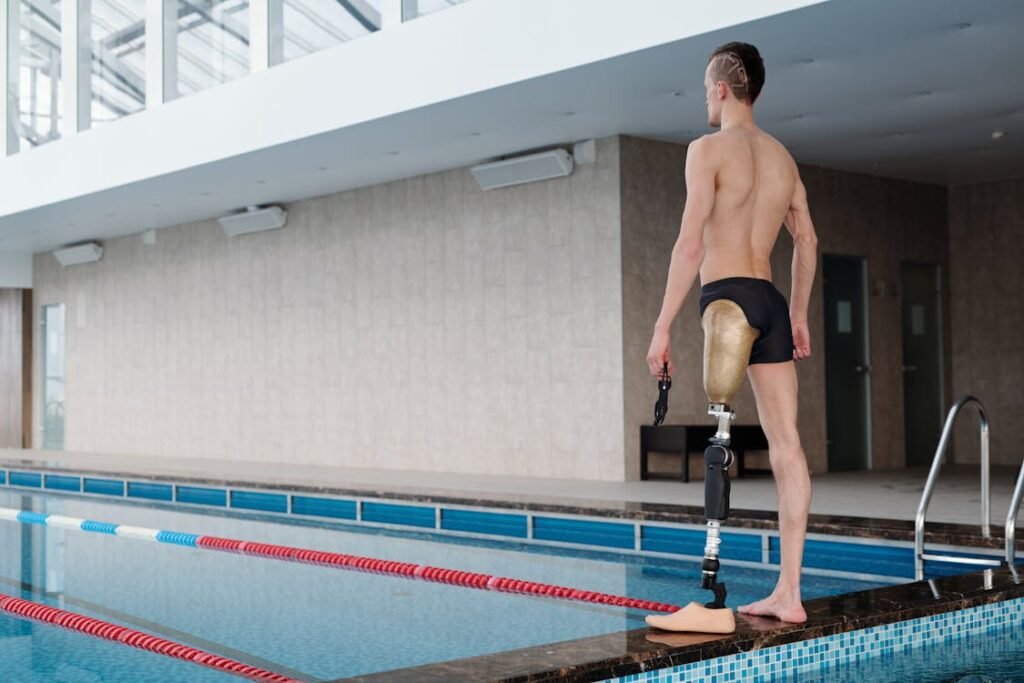Losing a limb is life-changing. It affects not just mobility but also emotions, confidence, and daily routines. The early days after an amputation can feel overwhelming, with physical healing, emotional adjustments, and new challenges to face. However, adapting to life without a limb is entirely possible with the right mindset, support, and practical strategies.
The transition does not happen overnight. It takes time to regain strength, learn new ways of doing things, and build confidence in using a prosthetic or managing daily life. But each step forward, no matter how small, brings new opportunities for independence and growth.

Understanding the Emotional Journey After Limb Loss
Losing a limb is not just a physical change; it brings a wave of emotions that can be difficult to navigate. Many amputees experience a mix of shock, grief, frustration, and even anger.
These feelings are completely natural, as the body and mind adjust to a new reality. Understanding and accepting these emotions is the first step toward a smoother transition.
Coping with Grief and Loss
Amputation often feels like losing a part of oneself. It is common to go through a grieving process, much like when experiencing any major loss.
Some days may feel overwhelming, while others may bring hope and progress. The key is to allow these emotions to be felt rather than suppressing them.
Talking about these feelings with family, friends, or a professional counselor can make a huge difference in processing them.
Many amputees struggle with frustration in the beginning. Simple tasks that were once effortless may now require extra effort or adaptation. It is easy to feel discouraged when daily routines take longer or require assistance.
But patience and persistence help in regaining independence over time. Setting small, achievable goals and celebrating progress, no matter how minor, builds confidence and resilience.
Overcoming Social Anxiety and Self-Consciousness
One of the biggest challenges after limb loss is feeling comfortable in social situations. Many amputees worry about how others will react, whether they will be stared at, or if they will be treated differently.
These fears can lead to withdrawal from social activities, making the transition even harder.
The reality is that most people are simply curious or unaware of how to approach someone with a limb difference. Preparing responses to common questions or reactions can help reduce anxiety.
Some amputees find comfort in humor, while others prefer straightforward explanations. The most important thing is to own the narrative and remember that limb loss does not define a person.
Rebuilding confidence takes time. Wearing a prosthetic may feel strange at first, and learning to move naturally in public spaces can be intimidating.
The more time spent around others, the easier it becomes to feel comfortable. Surrounding oneself with supportive people who treat the amputation as just another part of life makes a significant difference in regaining self-assurance.
Finding a Support System
No one should go through this journey alone. Family, friends, support groups, and rehabilitation specialists play a crucial role in helping amputees adapt.
Talking to others who have gone through similar experiences provides reassurance and practical advice. Online communities and local amputee groups offer a sense of belonging, reminding individuals that they are not alone in their challenges.
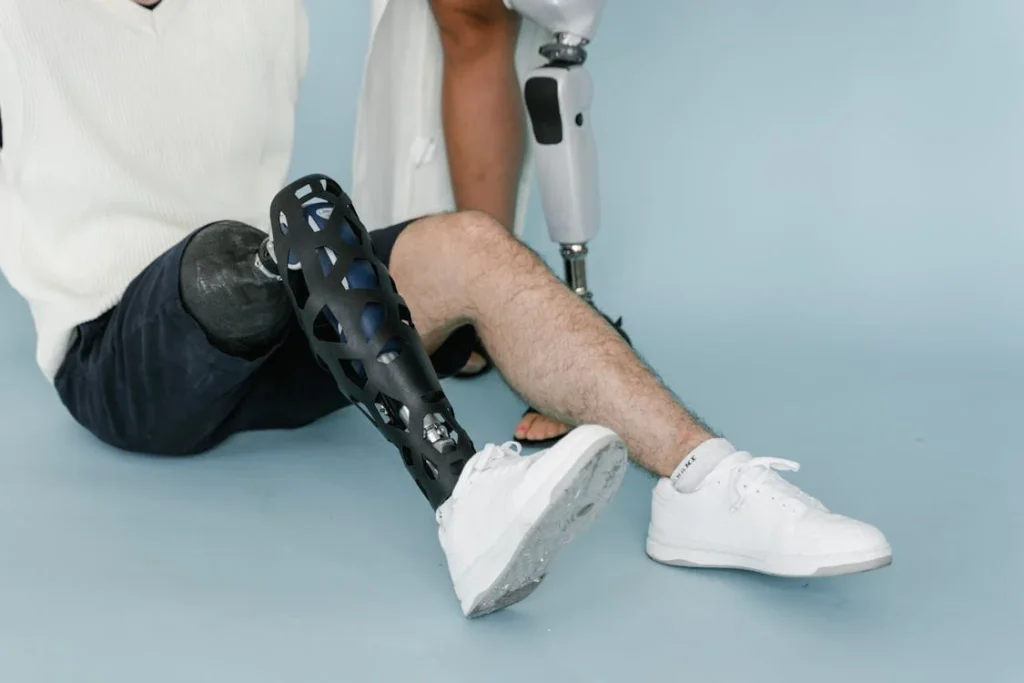
Regaining Independence and Adapting to Daily Life
Adjusting to life without a limb requires learning new ways to complete daily tasks, from getting dressed in the morning to preparing meals and moving around comfortably.
The process may feel frustrating at first, but with patience and practice, it becomes second nature. Each small success builds confidence and creates a sense of normalcy in daily life.
Learning to Move with Confidence
For lower-limb amputees, regaining mobility is a major part of rehabilitation. Whether using a wheelchair, crutches, or a prosthetic limb, developing balance and coordination takes time.
Physical therapy plays an essential role in strengthening muscles, improving posture, and making movements feel more natural.
In the beginning, walking with a prosthetic may feel unnatural or even exhausting. The body needs time to adjust to a new way of moving. Practicing in a controlled environment, such as a rehabilitation center, helps build confidence before venturing into public spaces.
Therapists guide amputees through exercises that improve gait, weight distribution, and endurance. Over time, walking, climbing stairs, and navigating different surfaces become easier.
For upper-limb amputees, adapting to daily movements like reaching, gripping, or carrying objects requires retraining muscles and coordination.
Prosthetic arms and hands come with different levels of functionality, and learning to control them efficiently can take practice. Occupational therapy helps amputees develop strategies for handling everyday tasks with ease.
Modifying the Home for Comfort and Safety
Making small adjustments to the living space can make daily life easier and reduce the risk of injury.
For lower-limb amputees, installing handrails in bathrooms, adjusting furniture layouts for better accessibility, and using non-slip flooring can improve safety. Sitting while performing tasks, such as cooking or dressing, can also help conserve energy.
For upper-limb amputees, adapting household tools and utensils can make a big difference. Many kitchen tools, grooming items, and even clothing designs are available to simplify tasks.
Simple modifications, like using elastic shoelaces or button hooks, allow for greater independence without frustration.
Technology and assistive devices also play a crucial role. Voice-activated smart home systems can make adjusting lighting, answering calls, or opening doors easier. Learning to use these tools effectively gives amputees more control over their environment and daily routines.
Returning to Work and Social Activities
For many amputees, returning to work or resuming social activities is an important milestone in regaining independence. The transition back to work depends on the type of job and the level of mobility required.
Some workplaces offer adaptive solutions, such as ergonomic workstations or remote work options, to help employees adjust comfortably. Open communication with employers about needs and limitations ensures a smoother transition.
Social activities also require adjustments, but they remain an essential part of emotional well-being. Whether it is meeting friends, participating in hobbies, or engaging in sports, staying active and connected boosts confidence.
Many amputees discover new interests or adaptive sports that allow them to stay physically and socially engaged.

Using Prosthetics to Enhance Mobility and Function
Prosthetic limbs offer amputees a way to regain independence, restore movement, and improve overall quality of life. While not everyone chooses to use a prosthetic, for many, it becomes a natural extension of their body.
The process of learning to use a prosthetic takes time, patience, and proper guidance, but once mastered, it significantly enhances daily life.
Choosing the Right Prosthetic
Selecting a prosthetic limb is a highly personal decision, influenced by factors such as lifestyle, activity level, and personal goals. Some amputees require high-functionality bionic limbs, while others may prefer simpler mechanical prosthetics.
The key is finding a prosthetic that feels comfortable, provides the necessary support, and fits well with daily needs.
For lower-limb amputees, prosthetic legs range from basic walking models to advanced microprocessor-controlled designs that adjust to terrain and movement patterns.
Athletes may opt for specialized sports prosthetics designed for running or other physical activities. For upper-limb amputees, prosthetic hands can provide grip strength, dexterity, and even sensory feedback, making everyday tasks more manageable.
At Robobionics, we focus on designing ergonomic, lightweight, and high-performance prosthetics that help amputees regain control of their lives. A well-fitted prosthetic not only improves mobility but also boosts confidence, making social interactions and work activities easier.
Training and Adjusting to a Prosthetic
Wearing a prosthetic for the first time can feel strange. The weight, balance, and movement require a period of adjustment, during which the body learns how to distribute weight and use the prosthetic effectively.
Physical and occupational therapy play a crucial role in this phase, helping amputees build strength, improve coordination, and master movement patterns.
For lower-limb amputees, gait training helps develop a natural walking rhythm. Therapists guide users through exercises that focus on posture, weight shifting, and stride length, ensuring comfort and efficiency.
Walking on different surfaces, climbing stairs, and navigating obstacles gradually become easier with practice.
Upper-limb amputees go through functional training to learn how to grip, lift, and manipulate objects. Advanced prosthetic hands with multiple grip patterns require muscle training and coordination to operate efficiently.
Activities like buttoning shirts, holding utensils, and carrying objects are practiced until movements feel natural.
Maintaining and Adapting Over Time
A prosthetic limb is not a one-time solution—it requires regular adjustments and maintenance to ensure comfort and functionality. As the residual limb changes in shape over time, the prosthetic socket may need modifications to prevent discomfort and pressure sores.
Checking for signs of irritation, cleaning the socket regularly, and replacing worn-out liners help prolong the life of the prosthetic.
Many amputees find that their needs change over time. What works in the first year of using a prosthetic may not be ideal later as activity levels increase.
Some choose to upgrade to more advanced models, while others may require a different socket fit for better comfort. Regular visits to a prosthetist ensure that the device continues to meet the user’s needs.
At Robobionics, we believe that a prosthetic should feel like a part of the body, not just a tool. With the right fit, training, and adjustments, amputees can regain independence and embrace an active, fulfilling life.

Staying Active and Maintaining Physical Health
Adapting to life without a limb requires a focus on overall physical health. Strength, flexibility, and endurance play a key role in making daily tasks easier and improving prosthetic use.
While mobility may change, staying active ensures that amputees remain strong, balanced, and capable of performing daily activities with confidence.
Strengthening the Body for Better Mobility
After an amputation, the body relies more on the remaining limbs and core muscles for stability and movement. Weak muscles can lead to poor posture, fatigue, and discomfort, especially for those using prosthetics.
Engaging in regular strengthening exercises helps build endurance and prevents long-term strain on the body.
For lower-limb amputees, core and hip strength are crucial for balance. Simple exercises such as seated leg lifts, standing on one leg (with support), and gentle stretching help improve stability.
Strengthening the back and shoulders is also important, as they help distribute weight evenly and reduce stress on joints.
Upper-limb amputees benefit from shoulder and arm exercises to improve grip strength and coordination. Resistance bands, hand squeezers, and functional training exercises help maintain flexibility and prevent stiffness.
For those using a prosthetic hand, grip practice and dexterity training make everyday tasks easier.
Low-Impact Activities for Long-Term Health
Many amputees worry that physical activity will be difficult after limb loss, but there are plenty of low-impact exercises that help maintain health without excessive strain.
Swimming is particularly beneficial, as it allows full-body movement without pressure on joints. Water therapy also improves circulation and reduces phantom limb pain.
Cycling, yoga, and adaptive sports provide great options for staying active. Many communities offer adaptive fitness programs specifically designed for amputees, making it easier to find enjoyable and effective exercise routines.
Even simple activities like walking, stretching, or chair exercises contribute to overall well-being.
Preventing Secondary Health Issues
A sedentary lifestyle can lead to muscle weakness, weight gain, and joint problems, making mobility more difficult.
Amputees, particularly those with lower-limb loss, may develop back pain or hip imbalances if their posture is not properly aligned. Staying active helps prevent these issues and ensures long-term physical health.
Proper nutrition also plays a role in maintaining strength. A balanced diet with plenty of protein, vitamins, and minerals supports muscle recovery and energy levels.
Staying hydrated is equally important, as dehydration can cause fatigue and muscle cramps, making movement more difficult.
The Psychological Benefits of Physical Activity
Exercise is not just about physical health—it also improves mental and emotional well-being. Many amputees experience stress, anxiety, or depression during their recovery, and regular movement helps release endorphins, which naturally improve mood and reduce pain.
Engaging in physical activities, especially group exercises or sports, fosters a sense of community and belonging. Many amputees find motivation in participating in adaptive sports, yoga, or even hiking, proving that life after limb loss can be just as fulfilling and active.
At Robobionics, we encourage amputees to stay active, find enjoyable movement routines, and prioritize their long-term health. Physical strength and mental resilience go hand in hand, making recovery smoother and daily life more manageable.
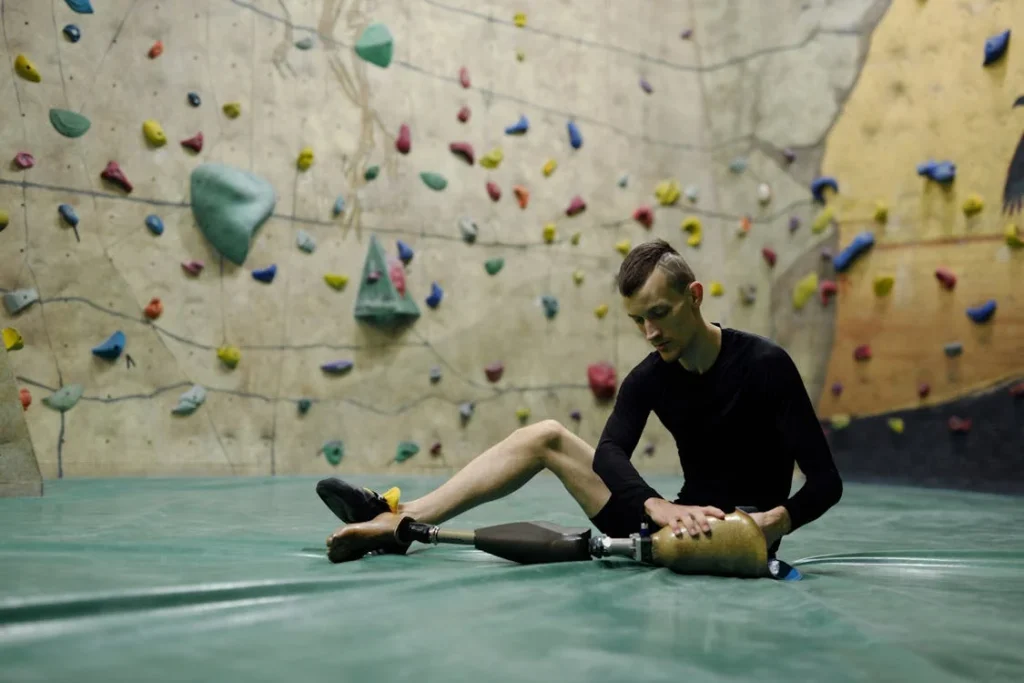
Managing Pain and Discomfort for a Smoother Transition
Pain management is a critical part of adapting to life after limb loss. Whether it is phantom limb pain, residual limb discomfort, or prosthetic-related soreness, finding ways to reduce pain improves mobility and overall well-being.
While some pain is expected during recovery, the right strategies help minimize discomfort and make daily activities more manageable.
Understanding Phantom Limb Pain
One of the most common challenges amputees face is phantom limb pain—the sensation of pain or tingling in the missing limb. This occurs because the brain still sends signals to the absent limb, creating the illusion that it is there.
These sensations can range from mild discomfort to sharp, stabbing pain.
Virtual reality therapy and mirror therapy have been shown to help retrain the brain, reducing phantom limb sensations over time. By visually interacting with a representation of the missing limb, the brain begins to accept the loss and decreases pain signals.
Massage, heat therapy, and nerve stimulation techniques can also provide relief. Keeping the residual limb warm and massaging it gently helps improve circulation, reducing nerve irritation.
Some amputees find that meditation and deep breathing exercises help them cope with phantom pain by shifting their focus away from discomfort.
Preventing Residual Limb Pain and Skin Irritation
The residual limb can be sensitive, especially in the first few months after amputation. Pain may come from nerve endings, muscle tightness, or improper prosthetic fit. Taking care of the limb is essential to prevent long-term issues.
A well-fitted prosthetic socket is crucial for comfort. If the socket is too tight or causes pressure in certain areas, it can lead to skin sores and irritation.
Regular adjustments with a prosthetist ensure that the fit remains comfortable as the residual limb changes shape over time. Using prosthetic liners and cushioning socks helps reduce friction and provides extra protection for the skin.
Hygiene also plays a major role in preventing infections and irritation. Cleaning the residual limb daily with mild soap and keeping the area dry helps prevent rashes and discomfort.
Checking for redness, blisters, or pressure sores ensures that any issues are addressed before they become serious.
Managing Pain While Using a Prosthetic
For new prosthetic users, soreness and discomfort are common in the beginning. The body needs time to adjust to the weight and movement of the prosthetic, and some muscle soreness is expected.
Gradually increasing wear time, rather than using the prosthetic for long periods right away, helps the body adapt more smoothly.
Physical therapy focuses on strengthening muscles around the residual limb, improving balance, and reducing strain on the body. Learning proper posture and walking techniques prevents overuse injuries, back pain, or joint stress.
If pain persists, it is important to consult a prosthetist to adjust the fit or explore alternative solutions.
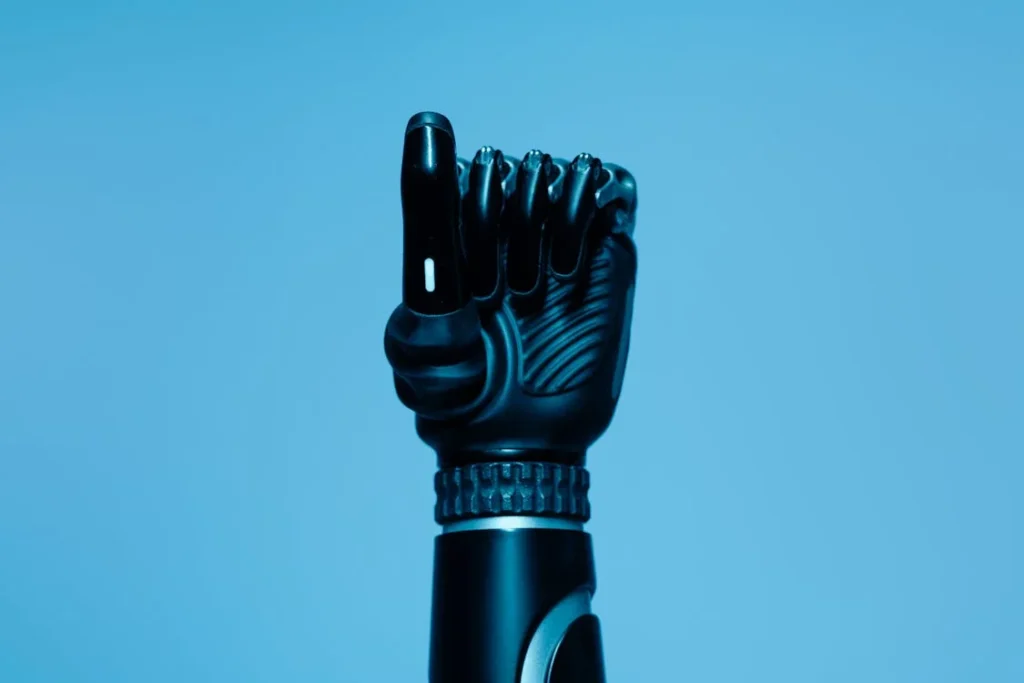
Embracing a Positive Mindset for a Successful Transition
Adjusting to life without a limb is not just a physical process—it is also a mental and emotional journey. A positive mindset plays a huge role in how smoothly the transition goes.
While there will be challenges, focusing on progress, adaptability, and self-acceptance helps create a more fulfilling and confident life.
Accepting Change and Moving Forward
Losing a limb brings major changes, and accepting this new reality takes time. Many amputees experience a mix of emotions, from frustration and sadness to determination and hope.
It is completely normal to have difficult days, but the key is not to let those emotions define the journey.
Instead of focusing on what has been lost, shifting perspective toward what is still possible makes a significant difference. The human body and mind are incredibly adaptable, and with time, new ways of doing things become second nature.
Setting small, achievable goals each day helps build confidence and creates a sense of accomplishment.
Support from family, friends, and peers makes a big impact. Talking openly about struggles and victories helps reinforce the idea that adaptation is a journey, not a race. Surrounding oneself with people who encourage and uplift makes the transition feel less overwhelming.
Building Confidence in Social Situations
One of the biggest mental hurdles for many amputees is feeling comfortable in public. The fear of being treated differently, getting unwanted attention, or struggling with simple tasks can create anxiety.
The more an amputee avoids social situations, the harder it becomes to reintegrate.
The best way to regain confidence is through gradual exposure. Starting with familiar places, such as visiting a close friend’s home or going to a local café, helps create positive experiences.
Practicing responses to questions about the amputation also reduces anxiety. Some people choose to embrace humor, while others prefer short, factual responses. The most important thing is to respond in a way that feels comfortable and empowering.
Wearing a prosthetic can also influence confidence levels. A well-fitted, high-functioning prosthetic allows for greater independence, making social interactions easier.
Some amputees choose to customize their prosthetic to reflect their personality, turning it into a symbol of resilience rather than something to hide.
Finding New Interests and Hobbies
Life after amputation does not mean giving up on passions and hobbies. In fact, it can be an opportunity to discover new activities that fit within the new reality.
Many amputees explore adaptive sports, creative arts, music, or community involvement as a way to stay engaged and motivated.
Engaging in physical activities, such as swimming, cycling, or adaptive yoga, helps build strength while improving mental well-being. Creative hobbies, such as painting or playing an instrument, provide a sense of purpose and self-expression.
Trying new things reinforces the idea that limb loss does not limit potential—it simply redirects the path.
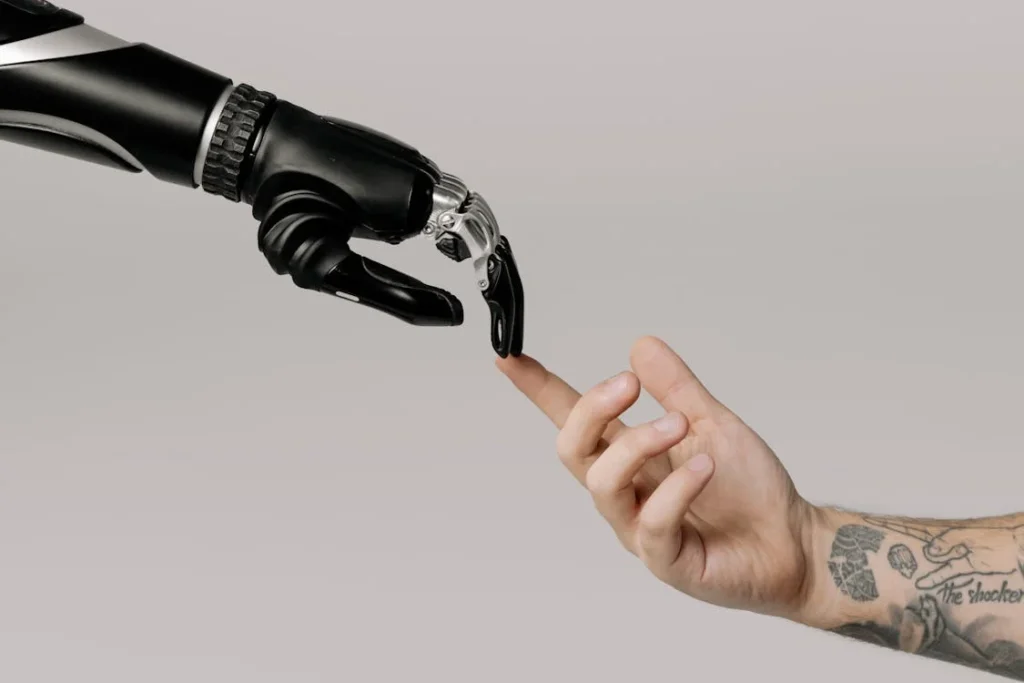
Navigating Relationships and Rebuilding Social Connections
Losing a limb not only affects the individual but also impacts relationships with family, friends, and colleagues. Adjusting to life after an amputation requires open communication, patience, and a willingness to embrace change together.
Whether it is maintaining strong personal connections, dating after amputation, or handling workplace interactions, building positive relationships helps create a support system that makes the transition easier.
Strengthening Family Bonds
Family members often play a major role in an amputee’s recovery, offering physical and emotional support. However, both the amputee and their loved ones may struggle to adjust to new dynamics.
Some family members may become overly protective, while others may feel unsure about how to help. Open communication is key to ensuring that support feels helpful rather than limiting.
Expressing needs clearly, whether it is assistance with certain tasks or encouragement to be more independent, helps create a balanced dynamic.
Letting family members know what is genuinely useful—rather than allowing them to assume—ensures a smoother adjustment. At the same time, recognizing their concerns and offering reassurance can ease their anxieties about the transition.
Spending quality time together, whether through shared hobbies or simply enjoying conversations, reinforces that relationships are based on connection rather than physical ability.
By focusing on mutual support and understanding, family relationships grow stronger through the recovery process.
Building Confidence in Social Settings
Reentering social life after an amputation can feel intimidating. Many amputees worry about how friends will react or if they will be treated differently.
In reality, most people simply want to be supportive but may not know the right way to express it. Taking the first step in reconnecting with friends helps break the initial discomfort.
Being open about the journey, sharing challenges, and allowing others to ask questions in a comfortable and respectful way can reduce tension.
Some amputees find that humor helps lighten conversations, while others prefer keeping discussions focused on shared interests rather than the amputation itself.
Attending social gatherings and participating in group activities, even if in small doses at first, helps rebuild confidence. The more comfortable an amputee becomes in social settings, the more natural interactions feel.
Over time, social life returns to a new normal, one that reflects resilience and self-acceptance.
Dating and Romantic Relationships After Amputation
One of the most personal challenges after limb loss is navigating romantic relationships. Many amputees experience concerns about attractiveness, intimacy, and how a partner will perceive their physical difference.
However, confidence and self-acceptance play a far greater role in relationships than physical appearance.
Being open about personal feelings, setting boundaries, and discussing any worries with a partner creates a foundation of trust and understanding.
For those entering the dating world, honesty and self-assurance make a strong impression. Most people respond to personality, energy, and connection rather than physical differences.
Conclusion
Adjusting to life without a limb is a journey filled with challenges, growth, and new opportunities. While the transition takes time, resilience, support, and the right mindset make all the difference. From managing emotions and rebuilding confidence to adapting daily routines and strengthening relationships, each step forward brings a renewed sense of independence.
Prosthetics, rehabilitation, and lifestyle adjustments help amputees regain mobility and control, but true recovery goes beyond the physical. A positive attitude, staying active, and engaging with loved ones create a fulfilling life where limitations are replaced by possibilities. Amputees are not defined by what they have lost, but by how they choose to move forward.
At Robobionics, we are committed to empowering amputees with high-quality prosthetics, rehabilitation support, and innovative solutions to ensure a smooth transition. If you or a loved one is adjusting to life after limb loss, know that you are not alone. Reach out today to explore options that can help restore mobility, confidence, and independence. The future is yours to shape, and with the right support, anything is possible.



